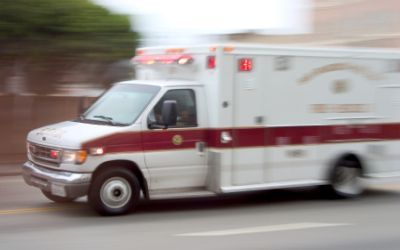Low Levels of Resistant Bacteria Found in Chicago-Area Ambulances

Treatment areas of ambulances fared well when tested for dangerous bacteria, according to a new study published in the April issue of the American Journal of Infection Control. Approximately 6 percent of sites sampled in Chicago-area ambulances tested positive for Staphyloccocus aureus (S. aureus), a bacterium that can cause serious infections and can easily acquire resistance to potent antibiotics.
A team of researchers from Lewis University in Romeoville, Ill took samples from 26 areas inside of 71 ambulances from 34 different Chicago-area municipalities. The team recovered 100 S. aureus isolates from more than 1,800 sites that were sampled (less than six percent). At least one S. aureus sample was found in 69 percent of ambulances tested. Of all isolates detected, 77 percent showed resistance to at least one commonly used antibiotic, and 12 percent were identified as the superbug known as methicillin-resistant S. aureus (MRSA).
The authors state, Of interest, only 5 of 71 ambulances tested positive for MRSA in at least one location (yielding the 12 MRSA isolates studied). Although there have been few previous studies of front-line advanced life support ambulances, a higher frequency of suspected MRSA in ambulance fleets has been reported previously.
These results indicate that first responders are doing a good job of protecting their patients, adds James Rago, PhD, lead study author and assistant professor of biology at Lewis University. The research is significant because improper cleaning of these surfaces could be a cause for concern due to the frequency with which emergency medical technicians may touch infected surfaces during patient care, the prevalence of open wounds among burn victims, and the fact that these patients go directly to the hospital where they come in contact with patients with compromised immune systems who are vulnerable to infections.
The authors conclude, Given the ease with which S. aureus can survive on inanimate surfaces and exchange antibiotic resistance elements, a conscientious approach to the application of existing cleaning techniques, especially in key ambulance sites, needs to continue.
Vet IP Roundtable 2: Infection Control and Biosecurity Challenges in Veterinary Care
March 31st 2025Veterinary IPs highlight critical gaps in cleaning protocols, training, and biosecurity, stressing the urgent need for standardized, animal-specific infection prevention practices across diverse care settings.
Invisible, Indispensable: The Vital Role of AHRQ in Infection Prevention
March 25th 2025With health care systems under strain and infection preventionists being laid off nationwide, a little-known federal agency stands as a last line of defense against preventable patient harm. Yet the Agency for Healthcare Research and Quality (AHRQ) is now facing devastating cuts—threatening decades of progress in patient safety.
From Shortages to Security: How Reusable Health Care Textiles Can Transform Infection Prevention
March 7th 2025Reusable health care textiles enhance infection prevention, reduce waste, and strengthen supply chains. Hygienically clean textiles offer a sustainable, cost-effective alternative to disposable PPE, ensuring patient safety and environmental responsibility.